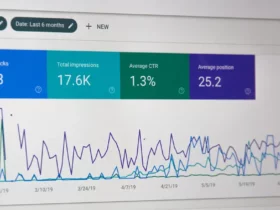You might have excellent content that draws people in. But, no one will be able to view or read your content if users are unable to find it. You will miss out on the opportunity to connect with readers who will visit your website and become potential clients.
However, which SEO strategy should you employ to guarantee that search engines can see your content? Which SEO analysis should you perform to find all the errors in your content strategy? Technical SEO is a straightforward solution.
To guarantee that their content will appear in search results, technical SEO focuses on helping website owners and content authors improve their websites and web pages for better search results.
Due to this, we will provide you with a detailed article on how you can use technical SEO for your content. This article will focus on all the tips on optimizing your content for SEO following technical SEO strategies so you can ensure the long-term success of your content as a content marketer.
Let’s now begin by explaining the crucial role of technical SEO when it comes to ensuring your content’s online visibility.
The Crucial Role of Technical SEO in Content Visibility
You need to make sure that search engines can see your website and content if you want people to find it. To display to internet visitors the most significant content on your website, search engines crawl and scan your website before indexing your web pages. Thus, making sure that your website is seen is essential.
You need to build an SEO-friendly website and optimize every component of your website for search engines to get it seen online. Your web pages will be able to be indexed, crawled, and understood by search engines, allowing them to be ranked higher in search results. This allows you to connect with readers of your writing.
Therefore, SEO ensures that your target audience will find and click on your content. This is why, any technical problems in your content and on-page SEO components might damage your content’s visibility.
Why Technical Health Matters for Your Content
Technical SEO is similar to giving your website a health check. It examines every aspect of your website and identifies any issues that can be affecting your internet presence. This is particularly crucial since you have to let your target audience know that your content is available. No technical obstacles are preventing you from doing so.
Should you fully optimize your website for search engines, you won’t have to worry about experiencing any technical issues with your visibility. Because of this, content marketers now place just as much emphasis on enhancing the technical SEO of their websites as they do on the content and on-page SEO components.
Optimizing Site Structure for Better Content Discovery
It may surprise you to learn how vital it is to place your content and important information on your website. When someone visits your website, they should be able to find the important information quickly and easily navigate the different pages and content. By creating a site layout that is easy to navigate, you can make sure of this.
One of the most crucial aspects of your website’s rating is its structure. If search engines are unable to crawl your information, your target audience will not be able to read it. For this reason, you need to design your website such that search engines can more easily understand the content you upload. Additionally, the way your website is structured should facilitate user navigation.
In light of this, you can design a hierarchical model that will draw attention to the locations of your key material and establish a hierarchy that will facilitate the understanding of your content by search engines and site users. Users may simply move around web pages and comprehend your content using this style.
You can do a website analysis while building your site structure to find out if you have any technical SEO issues. When it comes to site structure, technical SEO may optimize your headings, breadcrumbs, pertinent links, URL structure, and more.
The Importance of a Well-Planned Internal Linking Strategy
Internal linking is significant for a reason when it comes to your content and technical SEO. Internal links make it easier for users to navigate your website without any issues. They are essential to helping visitors to your website find the information they need.
Additionally, adding links to your content increases its connectivity and accessibility and makes it more interesting for readers. This is the reason content marketers need to develop a carefully thought-out internal linking strategy.
When forming your internal linking strategy, you must ensure that you are not overusing your keywords, that your links are relevant to your content, and there are no technical issues regarding your linking strategy.
Schema Markup to Improve Content Access
One thing you need to know about content strategy is schema markup. A code that provides search engines with information about your content is called schema markup. Your content might not rank higher in search results if you don’t assist search engines in comprehending it and the elements it contains. For this reason, schema markup is useful.
Schema markup helps ensure that your content appears in rich results by providing detailed information about your content. As a result, there are more hits on your web pages, increasing website traffic.
Before creating a schema markup for your website content, you must also learn how structured data is used. Schema markup is a form of structured data because it helps Google understand the information in your content and show it in rich results. How can a content marketer create schema markup then? You may ask.
As a content marketer, you may use the following schema markup formats when creating your content:
- Article
- Breadcrumbs
- Carousel
- FAQs
- Job postings
- Movie
- Products
- Recipes
- Reviews
- Videos
Examples of Schema Markup for Different Content Types
Which schema markup type you will choose for your content depends on the content you want to share on your website and what kind of posts target your audience better. If you are planning to share blog posts and inform your target audience, you must create a schema markup that will provide detailed information about your content. In this case, you can use blog posts.
On the other hand, if your content aims to promote your products and bring business revenue then you need to give detailed information about what your products are. In this instance, you must provide your target audience with information on how your product might be useful for them and how it could be utilized. To give this detailed information, you might use products, reviews, and images.
If you aim to give tips on your target audience and answer the most frequently asked questions then it might be best to choose schema markups “FAQs” or “how to”. These schema markups might be the best choice when it comes to answering the questions of your target audience.
Ensuring Mobile-Friendliness for Content Consumption
Websites nowadays need to be mobile-friendly for a reason. In today’s digital age, mobile devices and mobile browsers are used for the majority of online searches. Therefore, one of the worst things you could ever do is to undervalue the significance of mobile searches.
Your website is completely optimized for mobile SEO if it is mobile-friendly. A website optimized for mobile devices appears in mobile searches and receives clicks from users of mobile browsers. How can I make sure that the content on my website is mobile SEO-optimized? You could ask.
You must first select a mobile responsive theme before creating your website and web page content for mobile SEO. This theme could make it easier and faster for users to navigate your mobile website. In addition to utilizing a theme that adapts to mobile devices, you also need to ensure that the photos you use and the information you write are fully optimized for mobile search engines.
Dopinger’s Mobile-Friendly Test Tool
You might be wondering if there’s a way to measure how mobile-friendly your website is if you’re trying to improve its mobile SEO. Any errors that negatively impact your mobile visibility could also negatively impact your online visibility and technical SEO. For this reason, tracking and evaluating your mobile SEO activities is essential.
You can use Dopinger’s mobile-friendly test tool to evaluate your mobile SEO efforts. This tool could help you identify the SEO measures you should take to address any technical issues you may be having with mobile optimization and SEO.
Therefore, Dopinger’s technical SEO mobile-friendly test tool analyzes the following factors:
- Your website’s mobile responsive design
- Pop-up menus that you use on mobile
- Fonts you use on your mobile content
- Images that you use on your mobile content and web pages
This tool analyzes these parameters and provides important details about what is preventing content from your website from showing up in mobile search results. It provides you with the advantage of addressing any technical SEO issues you may have before they negatively impact your visibility.
Entering your website’s URL into Dopinger’s mobile-friendly test tool will allow you to see if it is mobile-friendly or not. You may find out what actions you should take to ensure that your website is responsive to mobile devices by carrying out this research.
The Role of Site Speed in Content Performance
Regarding technical SEO, there are more standards you should adhere to besides making sure your content and website are optimized for mobile devices. Contrary to popular belief, technical SEO involves more. Moreover, page speed is one of the most important technical SEO criteria.
When it comes to content, one of the most crucial factors is page speed. Fast-loading pages make it easier for your target audience to find what they’re looking for on your website. It indicates that finding and reading your material is not tough. For this reason, quick page loads improve user experience (UX), which is important for content marketers.
Enhancing the user experience on your website encourages visitors to stay longer and spend more time exploring your content. This has the benefit of encouraging readers in your target audience to read more of your content, which raises your website’s conversion rate. For this reason, you should focus especially on making your website’s pages load faster.
To increase the page load time of your website, you can apply the following tips:
- Optimize your images for SEO
- Erase unnecessary plugins
- Choose a faster server
- Optimize the delivery of your videos by embedding the links on your website
- Enable caching
Addressing Duplicate Content Issues
For content marketers, one of the most frustrating concerns is duplicate content. Not only do they negatively impact the user experience on your website, but they also impede search engines’ ability to index and crawl your content pages.
If your content appears more than once on different URLs, it is considered duplicate content. Search engines may find it more difficult to decide which material to crawl, index, and display in search results as a result. They can be oblivious to the content link that provides the solution to the search query. For this reason, you should take care of any duplicate content problems you may have before they have an impact on your internet exposure.
To fix duplicate content issues on your website, you can use Rel=”canonical” as a solution. This might provide search engines with information on which content link should be treated as the priority. You can also use 301 redirects on your duplicate pages to point out the original content link.
Monitoring and Fixing Crawl Errors
When it comes to technical SEO, crawlability is one of the main concerns for SEO experts, content marketers, and website owners. If search engines are having difficulty finding your website and crawling your web pages, it means that your web pages will have difficulty ranking in search results.
You must ensure that your intended audience can locate and access your material for them to read the information you offer. For this reason, you need to keep an eye on how crawlable your website is and report any problems that prevent search engine bots from visiting and indexing your content.
When search engine bots or spiders are unable to navigate your website, crawl issues occur. Why does this occur? You could inquire. The reason might be one of the following:
- Your website might have server issues
- Your website might have domain issues
- Your website might have robots.txt errors
- Your website might encounter URL errors
How to Use Search Console to Identify Crawl Issues?
You need to utilize a website analysis tool to identify any crawl problems your website might have. You may find crawl problems on your website and receive recommendations on how to resolve them by using a technical SEO audit.
You can use Google Search Console to track and examine crawl problems on your website. To analyze, track, and decipher technical SEO issues with your website, Google Search Console is an excellent tool. You might receive a thorough review of how your SEO strategy is working for your website from Google Search Console, covering everything from crawling problems to on-page optimization and content strategy.
You may easily obtain an analysis of crawl issues on Google Search Console by going to Settings and selecting “Open Report” in the crawl stats section. You might use this to see if Google found any problems with your website’s crawl. After that, you can click on any issue you find to view the URLs that correspond with it. You might get an idea of how to solve them from this.
Integrating Technical SEO into Your Content Strategy
If you’ve read thus far, you are already aware of how important technical SEO is to maintaining the visibility of your website. Your content is likewise subject to this. Regardless of the quality of your content, it will be useless if no one comes across it. This is why, you have to make sure search engines and your intended audience can see and understand your content. Because of this, you should consider technical SEO when developing your content strategy.
A thorough examination of the issues preventing your website from ranking higher online can be obtained through technical SEO. Technical SEO can evaluate your content for technical flaws and assist you in resolving them, from making your website mobile-friendly to identifying duplicate content problems. As a result, you might improve your search visibility.
Consequently, you should consider technical concerns and integrate technical SEO into your content marketing techniques while developing your content plan. Remember that while your content promotes your company and products, technical and search engine optimization (SEO) makes sure that your website, web pages, and content are visible to search engines and the people who matter most—your target audience.












